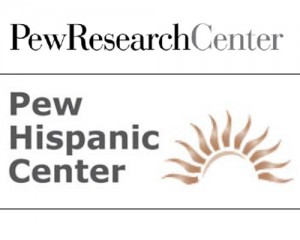U.S. Birth Rate Decline is Greatest Among Immigrants

The U.S. birth rate dipped in 2011 to the lowest ever recorded, led by a plunge in births to immigrant women after the onset of the Great Recession, according to a new analysis of government data by the Pew Research Center’s Social & Demographic Trends project.
Final 2011 data are not available, but according to preliminary data from the National Center for Health Statistics, the overall birth rate, which is the annual number of births per 1,000 women in the prime childbearing ages of 15 to 44, was 63.2 in 2011. This is the lowest since at least 1920, the earliest year for which there are reliable numbers. The overall U.S. birth rate peaked most recently in the Baby Boom years, and was nearly double today’s rate in 1957. The birth rate sagged through the mid-1970s, but stabilized for most years after that. It fell again after 2007, the beginning of the Great Recession.
 From 2007 to 2010, the overall birth rate declined 8%. The birth rate for U.S.-born women decreased 6% during these years, but the birth rate for foreign-born women plunged 14%—-more than it had declined over the entire 1990-2007 period. The birth rate for Mexican immigrant women fell even more, by 23%.
From 2007 to 2010, the overall birth rate declined 8%. The birth rate for U.S.-born women decreased 6% during these years, but the birth rate for foreign-born women plunged 14%—-more than it had declined over the entire 1990-2007 period. The birth rate for Mexican immigrant women fell even more, by 23%.
Besides the birth rate decline, the number of U.S. births, which had been rising after 2002, fell abruptly from 2007 to 2010—-a decrease also led by immigrant women. From 2007 to 2010, the overall number of births declined 7%, pulled down by a 13% drop in births to immigrants and a relatively modest 5% decline in births to U.S.-born women.
The fall in the number of births to immigrant women is explained by behavior (falling birth rates), rather than population composition (change in the number of women of childbearing age), according to a Pew Research analysis. Despite a recent drop in unauthorized immigration from Mexico, the largest source country for U.S. immigrants, the Pew Research analysis found no decline in the number of foreign-born women of childbearing age. Although the data do not explain why women had fewer births after 2007, a previous Pew Research analysis concluded that the recent fertility decline is closely linked to declining economic circumstances.Poverty and unemployment also grew more sharply for Latinos than for non-Latinos after the Great Recession began.
Among this report’s other major findings:
- Share of Foreign-born Mothers: Despite the recent decline, foreign-born mothers continue to give birth to a disproportionate share of the nation’s newborns, as they have for at least the past two decades. The 23% share of all births to foreign-born mothers in 2010 was higher than the 13% immigrant share of the U.S. population, and higher than the 17% share of women ages 15-44 who are immigrants. The recent downturn in births to immigrant women reversed an earlier trend in which foreign-born mothers accounted for a rising share of U.S. births.
- Race: Among mothers of newborns overall in 2010, slightly more than half (54%) were white, 15% were black, 24% were Hispanic and 6% were Asian. A majority of births to U.S.-born women (66%) in 2010 were to white mothers (although that share is smaller than in 1990, when it was 72%). The majority of births to foreign-born women (56%) were to Hispanic mothers. Both foreign- and U.S.-born Hispanic women had larger birth rate declines from 2007 to 2010 than did other groups.
- Age: Teen mothers account for a higher share of births to U.S.-born women (11% in 2010) than to foreign-born women (5%), in part because of the age profile of immigrants. Mothers ages 35 and older account for a higher share of births to immigrants (21%) than to the U.S. born (13%). In fact, immigrants account for fully 33% of births to women ages 35 and older.
- Marital status: The share of births to unmarried mothers is higher for U.S.-born women (42%) than for immigrant women (36%). This difference is explained in part by the greater likelihood of immigrants to be married, compared with U.S.-born women.
- Earlier Trends: The share of U.S.-born children younger than age 2 with foreign-born mothers was about as high during the wave of immigration in the early 1900s as it is now (21%). By 1960, following four decades of restrictions on immigration, that share had plummeted to a low of only 4%. It inched up to 6% by 1970 before rising rapidly as immigration levels increased due mainly to federal legislation passed in 1965.
- Population Projections: Population projections from the Pew Research Center indicate that immigrants will continue to play a large role in U.S. population growth. The projections indicate that immigrants arriving since 2005 and their descendants will account for 82% of U.S. population growth by 2050. Even if the lower immigration influx of recent years continues, new immigrants and their descendants are still projected to account for most of the nation’s population increase by mid-century.
The report, U.S. Birth Rate Falls to a Record Low; Decline Is Greatest Among Immigrants, from the Pew Research Center’s Social & Demographic Trends project, is available atwww.pewsocialtrends.org.
The Pew Hispanic Center, a project of the Pew Research Center, is a nonpartisan, non-advocacy research organization based in Washington, D.C. and is funded by The Pew Charitable Trusts.
# # #
[Photo by moodboardphotography]


